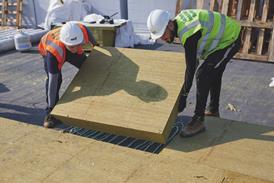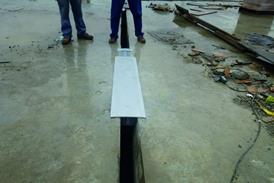- News
Regulations latest
All the latest updates on building safety reform
- Focus
- Comment
- Data
- Programmes
- CPD
- Events
- Jobs
- Subscribe
- Building Boardroom
Infrastructure update: Carbon capture and storage

Carbon capture and storage will play a vital role in meeting the UK’s emissions reduction targets. Agnieszka Krzyzaniak and Tim Cooper of Arcadis consider how close the UK is to large-scale application of this technology
01 / Introduction
Carbon capture, use and storage (CCUS) involves first capturing carbon dioxide generated through industrial processes, power generation and certain hydrogen production methods, as well as active capture through greenhouse gas removal technologies that range from engineered to nature-based solutions. Then the captured carbon dioxide is either used, for example in chemical processes, or stored permanently in disused oil and gas fields or in naturally occurring geological storage sites.
According to the UK’s industrial decarbonisation strategy, CCUS technology is not meant to replace but rather to support decarbonisation efforts, and is essential if the UK is to meet its net zero ambitions by 2050. With less than 30 years left, time is of essence to scale up CCUS. However, the UK government has so far had limited success in deploying it.
CCUS’s critical role in UK decarbonisation has been under discussion since the 2003 energy white paper. Initial commitments to deploy it were made in 2007, only for the first two demonstration competitions to be cancelled in 2011 and 2012. These disappointing outcomes are likely to have informed the opinion of the Global Carbon Capture and Storage Institute, which in 2018 stated that the UK had only an “average” level of national interest in the technology – despite having one of the world’s most favourable environments for commercial deployment of CCUS and ranking fourth in the Global Carbon Capture and Storage Institute’s CCS Readiness Index.
CCUS will be essential to enable the green transition, earning it a separate point of its own in prime minister Boris Johnson’s Ten Point Plan. In addition, CCUS technology is necessary to enable the realisation of at least five other Ten Point Plan commitments.
With the need for the technology clear and policy being rapidly developed, the key question now is whether the funding model can be put in place to make it an investable proposition. This has come closer after this month’s COP26 climate conference in Glasgow, following the finalisation of proposals for a global carbon credits market that will attract new investment into the carbon abatement market.
Read more…
This is PREMIUM content
available to Building Boardroom and Building subscribers only
You are not currently logged in. Building Boardroom Members and Subscribers may LOGIN here.
Become a Building Boardroom Member

to read this report now, plus have unlimited access to:
- Exclusive research and client insight to support your strategic planning
- Benchmark reports, and proven tools to aid your business development
- Attend bespoke community events…plus much more
Alternatively…
Become a Building subscriber
to gain access to building.co.uk for the latest news, expert analysis & comment from industry leaders, plus data and research.
Already a Boardroom member? Log in here.



















